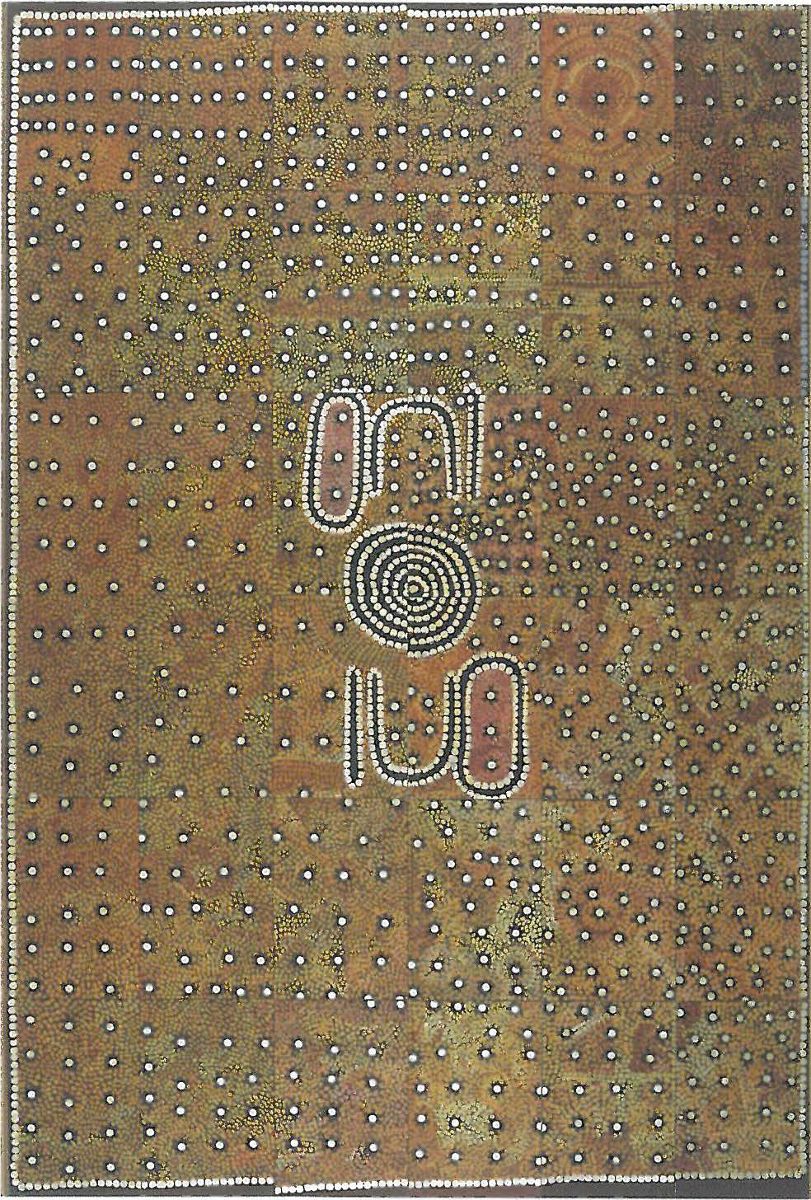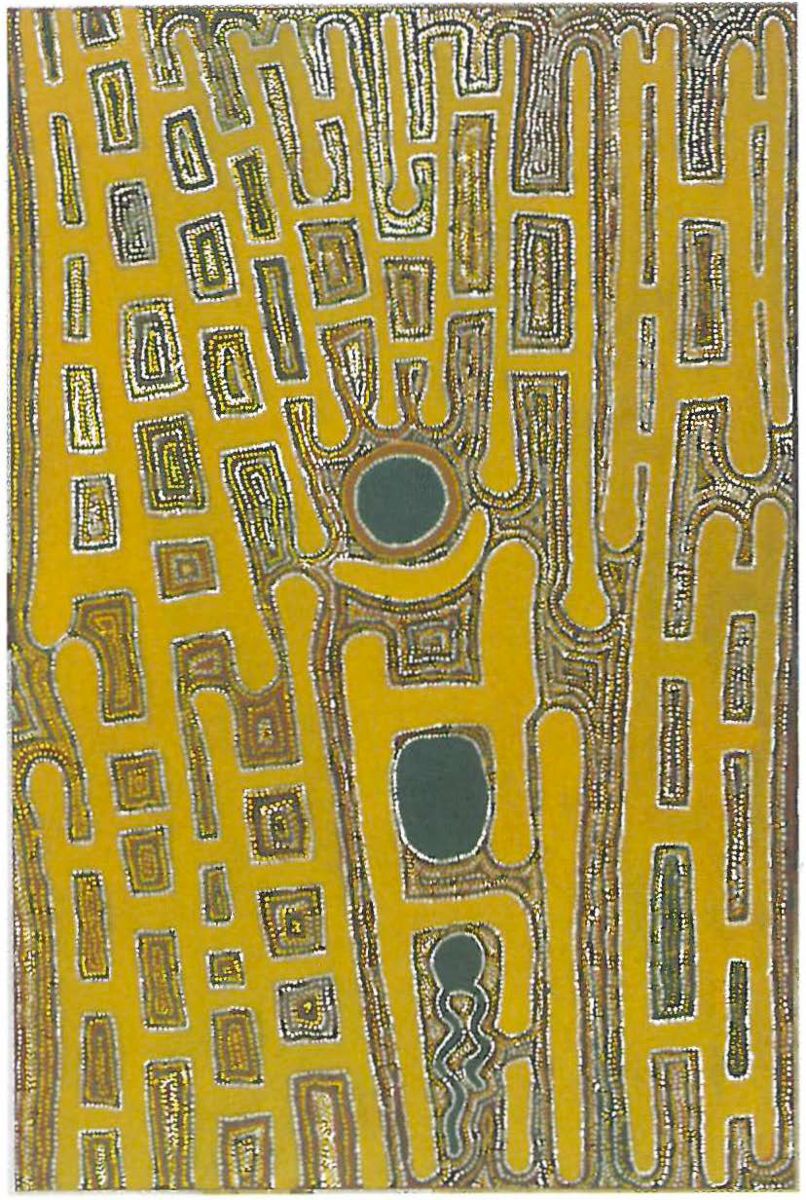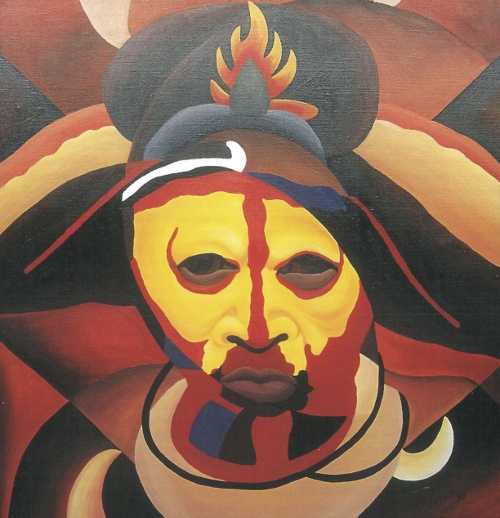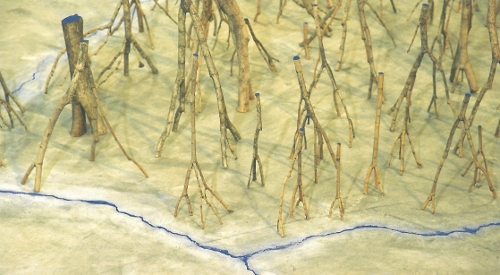
Artists in Focus is an exhibition of works by twelve artists of Aboriginal and non-Aboriginal descent which explores the complex and problematic nature of cultural appropriation, cross referencing and inter-cultural collaboration. These themes are not overtly implied by the paintings themselves, nor in their juxtapositions on the walls of the gallery, but rather through the accompanying texts displayed next to the works. While the paintings, which are all non-figurative, can be appreciated for their formal values alone, this is not the curatorial objective.
Whereas the texts tell us about cross-cultural influences and the collaborations between some of the artists, such as Imants Tillers and Turkey Tolsen, Tim Johnson and Gordon Bennett, there is a broader issue which is stated upfront by the curator. This encompasses (white) Australia's ongoing search for "a recognisable, national cultural identity... with indigenous imagery consistently borrowed in the process". While this borrowing has been conducted over many decades, without any particular regard for the inherent cultural values attached to the images, by the 1980s attitudes were changing. Authentic indigenous art had become a highly sought-after cultural commodity and appropriation was no longer seen as an innocent act.
Much of the art in this exhibition dates from the 1980s when white Australian and indigenous artists began to work collaboratively, but not it would seem, to the extent of sharing canvases. That neither culture can nor should absorb the other, but co-exist, is illustrated in the collaborative work Creation Story. This consists of two paintings, Creation I and Creation II by Tim Johnson and Gordon Bennett respectively. Their canvases abut each other on the wall but both maintain a highly individualistic style and palette. Johnson's work is a painterly abstraction of colour patches with what may be stick-like figurations ghosting through the background. These could be a reference to Aboriginal wall paintings, although they are barely ciphers for the human form, while areas of gold paint may reflect his experiences in Asia where gold leaf plays a significant role in religious practice. Bennett, an indigenous artist from Queensland, appropriates the Papunya dot painting style to create a non-indigenous image of a cosmic world of swirling forms in a deep purple space. The birth of a galaxy perhaps, while Johnson's vision explores earthly mysteries.
Unlike Creation Story, Imants Tillers' Monitor and Icon is a deliberate appropriation, or 're-invention' of Turkey Tolsen Tjupurrula's Women's Dreaming, which is reproduced in colour in the supporting text panel. However it is described, Tillers' work appears to be nothing more than a reproduction of Tolsen's powerful painting into a Tillers' signature style multi-panel art piece. Equally powerful in its simplicity is Emily Kame Kngwarray's Body Markings (I - II). These works could be seen to represent the final transition of indigenous art on traditional surfaces to canvas or board, the cross-cultural influence, to another dimension altogether where her imagery becomes abstracted to a highly expressive and personalised mode of representation. These works stand in marked contrast to her earlier works in the exhibition titled Awelye which use the traditional dot form.

Peter Skipper's two paintings Purnarra V (1987) and Mangkajakura I, (1987), hang side by side. His works represent the transition of tribal forms and imagery from traditional to Western mediums, in this instance synthetic polymer paints on linen. The Purnarra design, bold geometric and concentric patterns that were traditionally carved onto objects, reflect natural patterns seen in nature, whereas Mangkajakura is a superb aerial representation of an important spring soak or jila in the Great Sandy Desert of Western Australia.
The theme of this exhibition has a particular resonance given the context of the immediate locality of the gallery - the newly created Claisebrook Cove. Part of the extraordinary transformation of this former degraded urban site, and former Nyoognar meeting and camping ground, has been the commissioning of public art works from indigenous and non-indigenous artists. The glass wall of the gallery looks directly across the Cove where these works are visible.
Jerry Morrison's monolithic Nganga Batta's Mooditcher (Sunbeam's Living Strength), a series of large standing stones, and the collaborative mosaic Bibbullmun Dreaming Story by Sandra Hill, Miv Egan and Jenny Dawson, attempt to recover something of the obliterated history of the site while reconciling two very different cultures.












